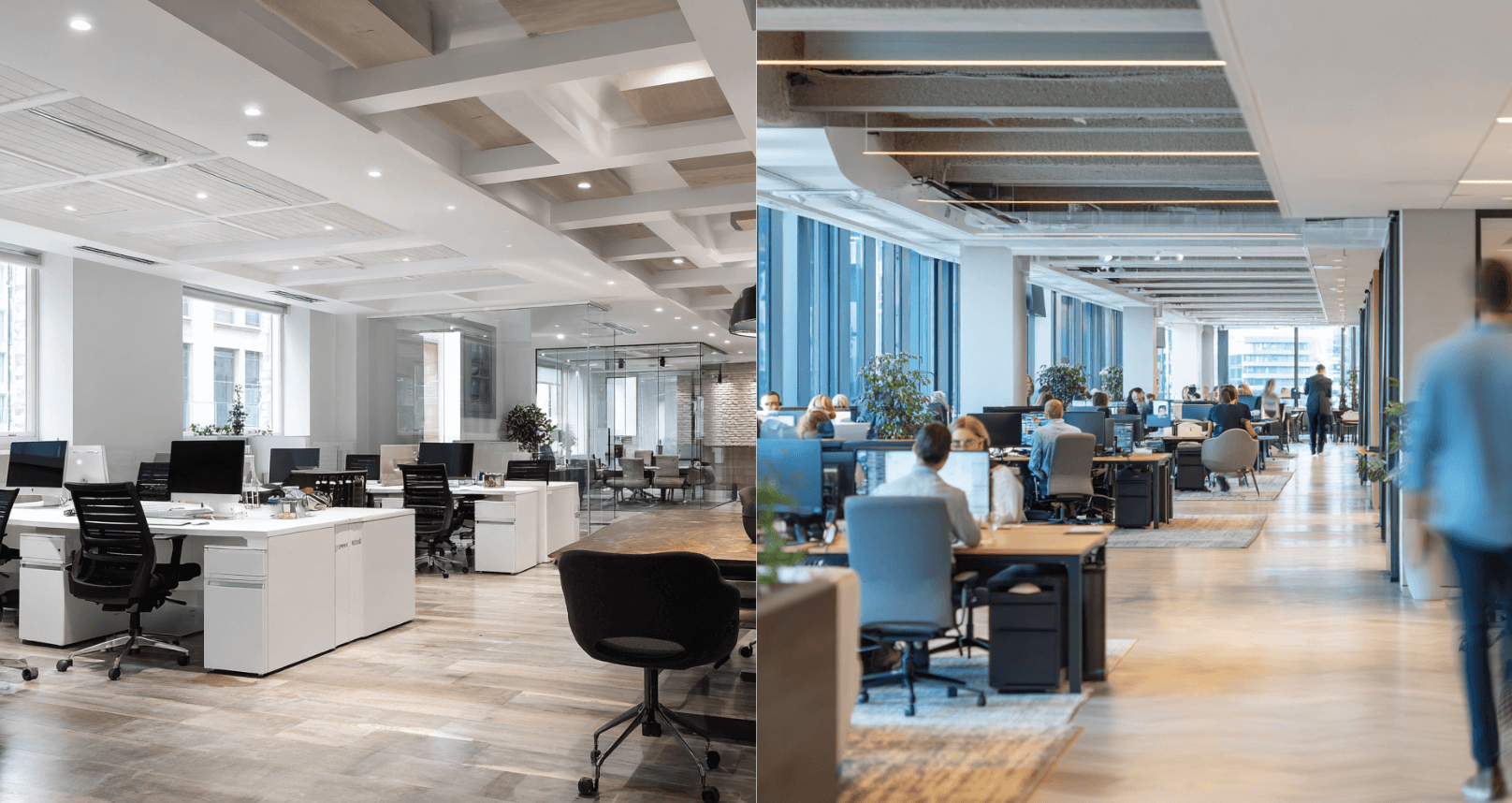A workplace love story: Phone booth meets sensor
Phone booths are booming—and occupancy sensors help companies manage and measure them with ease.

You know how Superman changes in phone booths? Well, office workers undergo a similar transformation inside the corporate version of these glass boxes. From open-office refugees into productivity superheroes.
No surprise that demand for office phone booths these days is, well, off the hook.
In the second quarter of 2025, office phone booths represented 17% of new spaces our sensors cover among our customer base, more than 4x the amount from 2024.
When our customers are firing up our Atlas analytics platform, guess what space type they look at the most? Phone booths. Nearly a third of chart filtering, to be exact. The questions they’re seeking answers to: How are they being used? Which booths are free? Do we need more? Do we need phone booths to fit more than one person?
The future is modular
The answer to “do we need more?” is probably yes. From Zooms to deep work sessions or a quick call to set up a dentist appointment, these cozy booths are quickly becoming the coveted office parking spot for a growing number of employees.
The phone booth market is expected to boom over the next few years. Business Research Insights predicts sales for office pods, which include phone booths, will more than triple to $2.03 billion in 2033 from $610 million in 2024.
Fueling that growth is their inherent flexibility. Often phone booths can be installed in a few hours, not quarters. Companies can create entirely new spaces with zero permits, contractors or construction mess. Need to change up the office? Phone booths can be easily moved around on a floor, or even to different buildings.
Smart booths, smart workspaces
Marrying phone booths with occupancy sensors is a match made in heaven. Installing a people counter like, Waffle, in phone booths allows employees to see phone booth availability in real time, making it a cinch to find a spot for a last-minute call or video conference.
If Live Wayfinding is set up, even better. Employees working in larger offices can walk up to any wayfinding screen and get breadcrumbed to the nearest available phone booth, saving time and patience.
And with phone both occupancy insights, workplace pros can better understand how their entire space portfolio is being used (or wasted), enabling them to make data-based decisions before undergoing pricey office redesigns or reconfigurations.
One customer was able to identify up to 28% of meeting space that was being wasted at one location due to ghost meetings. Check out Got ghost meetings? How to solve this costly workplace challenge.
The Employee Oasis Effect
The truth is, employees love them. They’re islands of quiet in busy offices, a place where they can focus on tasks without interruption, thanks to the acoustic paneling. Larger models—some fit six or more—become impromptu spaces for meetings or brainstorms when every conference room is booked.
Every year, the bar keeps getting raised. In addition to soundproofing, many booths now come with ventilation systems that prevent the pods from turning into saunas. The lighting adapts to minimize eye strain. Power outlets and USB ports make it easy to charge devices, especially for employees camping out.
Origin story: From complaint to conquest
The pioneer in the space, Finland-based Framery, started in 2010. That was after CEO Samu Hällfors told his then boss he was talking too loud on the phone in their open office. His boss’s sarcastic response? “Well, buy me a phone booth.”
Hällfors took that literally and Framery was born. They’re now selling their phone booths in 90-plus countries to more than 9,000 customers like Puma, Nvidia and Microsoft. As the space booms, other phone booth companies have gotten into the mix, too.
Staying on top of the data
We expect the phone booth demand trajectory to continue straight up and to the right for a while. As companies shift among remote, hybrid and in-office policies, flexible space solutions aren't just nice-to-haves. They're a must.
The important thing is not just looking at phone booths—but also looking at data on how they're used. In a world where real estate costs are considerable and space efficiency is key, companies that measure their phone booths will be the ones to get the most out of their real estate.
Interested in learning more about Density's solutions?
Key Takeaways

DisruptCRE founder shares how corporate real estate is changing
Companies are moving employees from underutilized offices into "space as a service” options with utilization data.
Watch now
Half of offices are empty but you still can’t find a meeting room
Employees waste up to 30 minutes a day looking for a meeting room to meet in workplaces.
Read moreMost recent

Space waste: The industry’s naughty and nice list
Our sensors spilled the beans: What industry is winning, who's wasting and who's hogging your office real estate.
.png)
Improve your occupancy sensor RFP with our best practice guide
Discover essential questions to simplify your occupancy sensor RFP process and confidently choose the right vendor.

Does RTO actually work? A webinar debate with the data
Density’s RTO data sparks debate between a pro-office CEO and a remote-friendly workplace strategist.

Modern work: Less meetings, more trust and the office reboot
Density CEO Andrew Farah and real estate expert Gordon Lamphere unpack the big ideas shaping work today.
Explore other Density Products
Atlas for Workplace
Insights for the workplace that help you cut costs and deliver better spaces.
Learn more